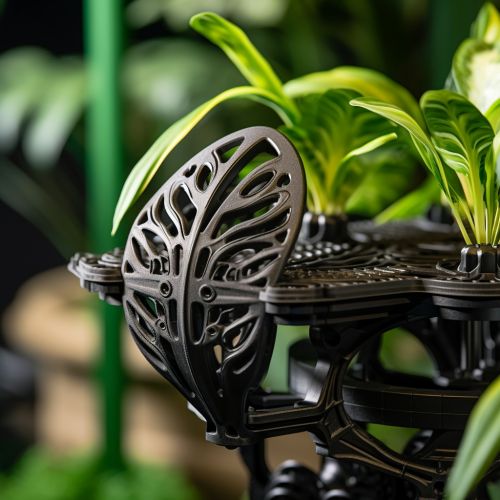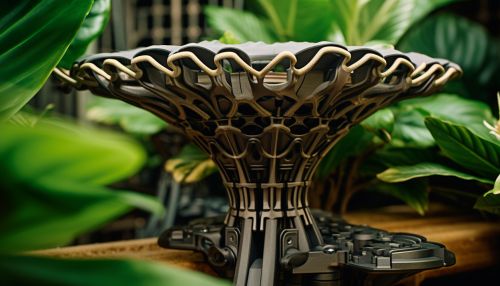Plant-inspired Actuators
Introduction
Plant-inspired actuators are a subfield of biomimetics that involves the design and creation of devices that mimic the movements and mechanisms found in plants. These actuators are often used in robotics, material science, and other fields where precise, responsive movement is required. The study of plant movements, known as plant biomechanics, provides the foundation for the design of these actuators.


Types of Plant Movements
There are several types of movements in plants that have inspired the design of actuators. These include nastic movements, tropic movements, and rapid plant movements.
Nastic Movements
Nastic movements are non-directional responses to stimuli. They are not dependent on the direction of the stimulus. An example of this is the closing of a Venus flytrap's trap, which is a thigmonastic movement (response to touch).
Tropic Movements
Tropic movements are directional movements that occur in response to a stimulus. They are dependent on the direction of the stimulus. Examples include phototropism (response to light), gravitropism (response to gravity), and hydrotropism (response to water).
Rapid Plant Movements
Rapid plant movements are those that occur in a very short time, often in milliseconds. These movements are often used by plants for defense or for capturing prey. Examples include the snapping action of the Venus flytrap and the explosive release of seeds by some plants.
Design and Mechanism of Plant-Inspired Actuators
The design of plant-inspired actuators involves the careful study of the mechanisms behind plant movements. These mechanisms are then replicated using various materials and technologies.
Bio-Inspired Materials
Bio-inspired materials are often used in the design of plant-inspired actuators. These materials mimic the properties of plant tissues, allowing for similar movements and responses. Examples of these materials include hydrogels, shape-memory alloys, and electroactive polymers.
Actuation Mechanisms
The actuation mechanisms in plant-inspired actuators often involve changes in shape or volume in response to external stimuli. These changes can be triggered by various factors, such as changes in temperature, light, or pH. The actuation mechanisms are designed to mimic the movements of plants as closely as possible.
Applications of Plant-Inspired Actuators
Plant-inspired actuators have a wide range of applications in various fields. These include robotics, material science, medicine, and more.
Robotics
In robotics, plant-inspired actuators are often used in the design of soft robots. These robots are designed to be flexible and adaptable, much like plants. The actuators allow the robots to move and interact with their environment in a more natural and efficient way.
Material Science
In material science, plant-inspired actuators are used to create smart materials. These materials can change their properties in response to external stimuli, much like plants. This allows for the creation of materials with novel properties and applications.
Medicine
In medicine, plant-inspired actuators are used in the design of medical devices and drug delivery systems. The actuators can be designed to respond to specific stimuli in the body, allowing for targeted treatment and therapy.
Conclusion
Plant-inspired actuators are a fascinating and rapidly growing field of study. By mimicking the movements and mechanisms found in plants, scientists and engineers are able to design devices with remarkable capabilities. Whether in robotics, material science, medicine, or other fields, these actuators have the potential to revolutionize the way we design and build machines.
